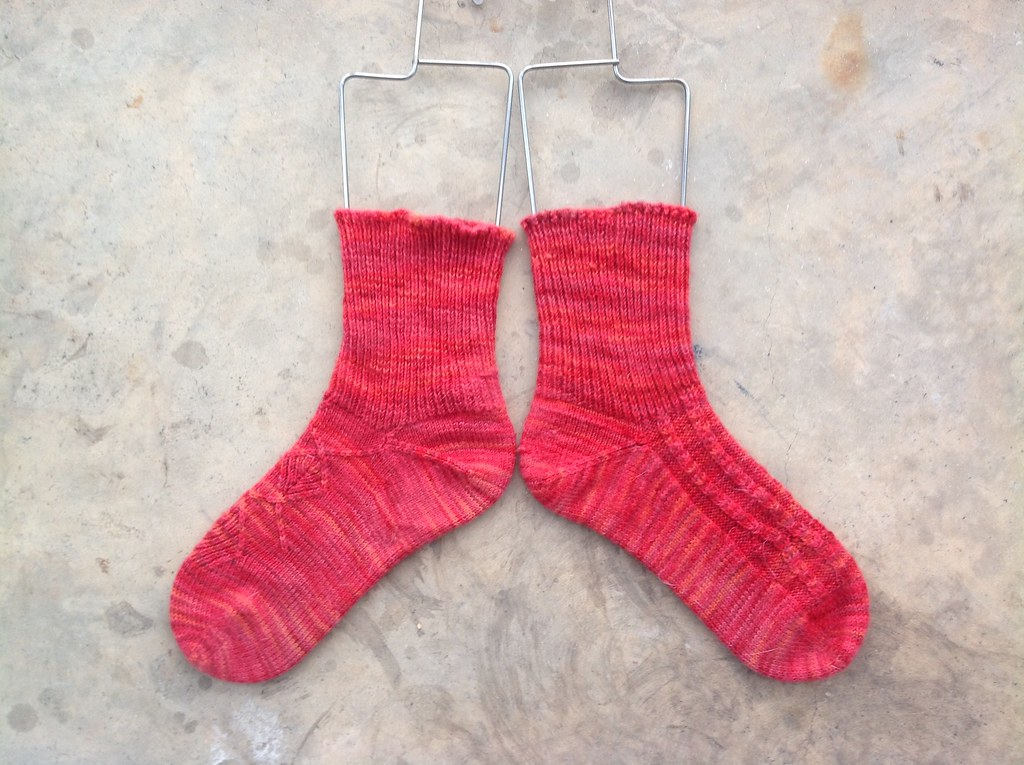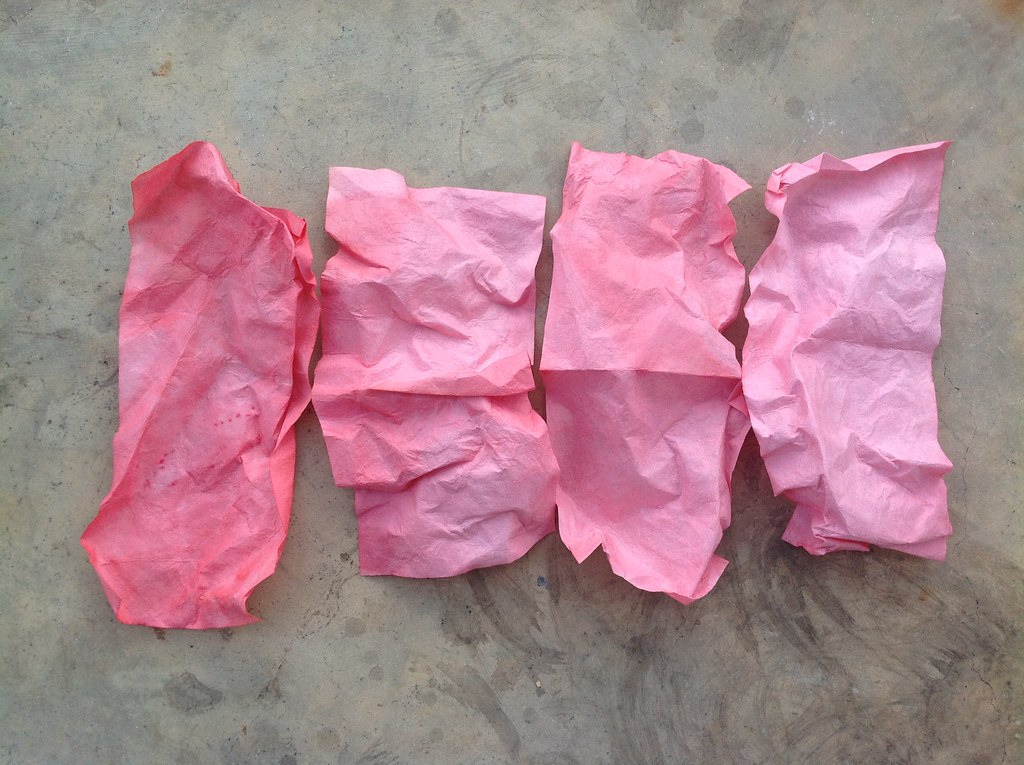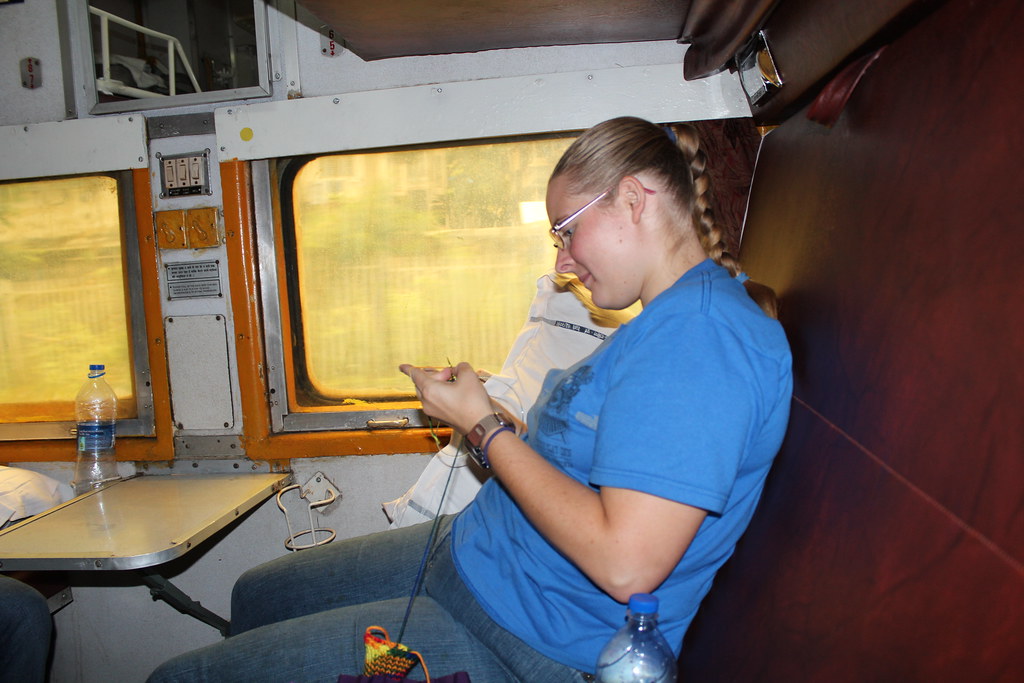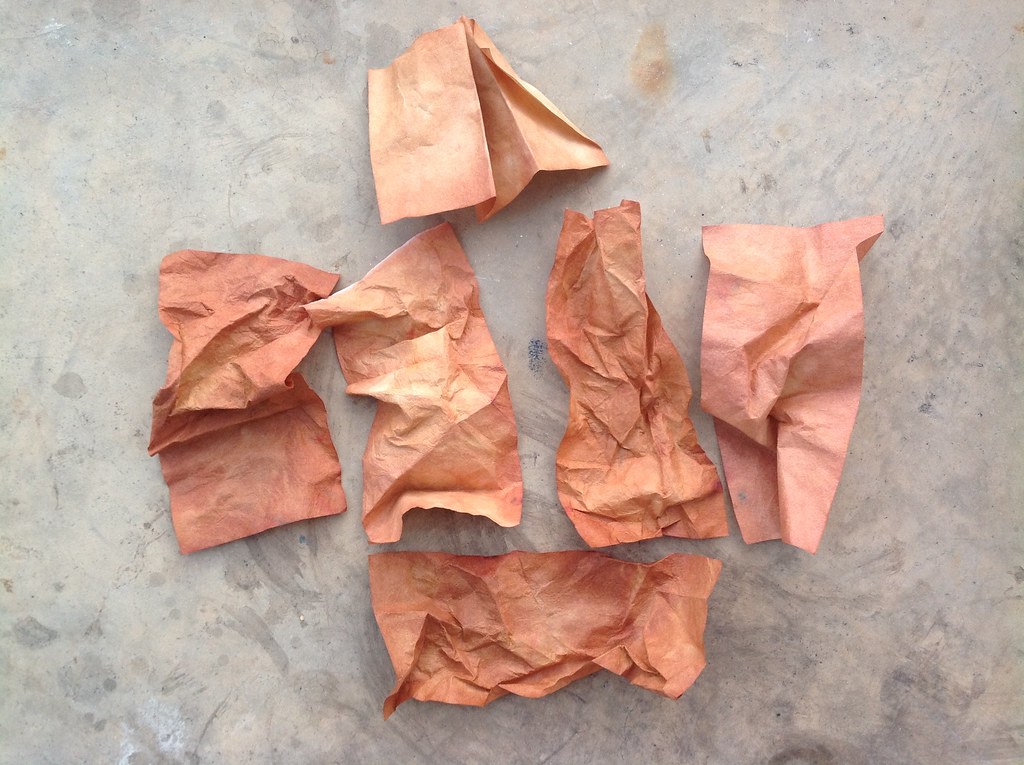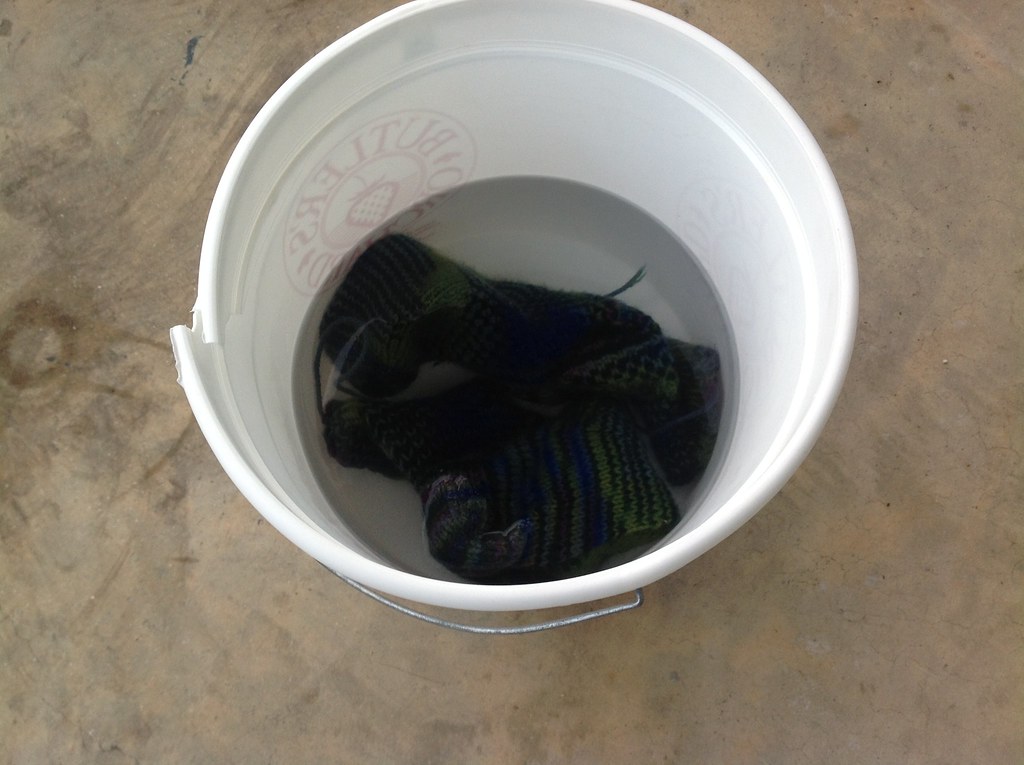I’ve had a couple of people ask how I did the food coloring dyeing with the children in my camp. This post is how I went about it, which is by no means an exact recipe.
First, I filled buckets with tap water and vinegar. As a note, vinegar worked but many of the campers complained of the smell. Next year I plan to try citric acid. I used, per quarter gallon, about one or two slugs. The roving (you could also use yarn, as long as it’s 100% wool) was then soaked in the solution for about 15 minutes.
The roving was then removed and squeezed dry.
I used paper and then saran wrap over it to cover the tables, which prevented dye from getting everywhere.
Using the leftover vinegar water, I poured small amounts into plastic cups, and then added the food coloring. I used super-concentrated gel food coloring, which worked really well. The children used sponges to apply the food coloring – one sponge to a color.
Results came out best when the children didn’t get their roving overly wet – just damp enough that the color adhered to the places they were applying. They used the sponges like stamps, soaking up color and then “stamping” it onto the roving.
When the children were done applying color, we wrapped the roving in a long piece of saran wrap, which then went into a freezer-safe bag. Freezer safe bags are much sturdier, so they held up better to the next step.
When I got home, I took the roving, still in the plastic bag, and microwaved the roving for 2 minutes, allowed it to cool, then microwaved it for another 2 minutes.
After the roving had cooled, the piece was removed from the plastic bag and the seran wrap. The roving was gently rinsed in cool water, gently squeezed dry (to prevent felting) and then was hung to dry.
There was no running of dye, and the colors were very bright.


